Useful tips: what is grown in greenhouses
The greenhouse has become a mandatory building on the personal plot. With its help, it is possible to grow vegetables and greens all year round. Insulated greenhouses are more often used for commercial purposes - for growing plants for sale. Simple ones are needed for gardeners to harvest an early harvest.
Whatever structure is on the site, there are certain rules for crop rotation that must be observed. Otherwise, the cultivation of vegetables will not work. Having built a greenhouse, many are wondering what is better to grow, what crops will be profitable to plant indoors. This will be discussed below.
Content:
- What crops are sown in greenhouses
- Cultivation and crop rotation rules
- Spring-summer crops
- Year-round crops
- Benefits of greenhouse cultivation
What crops are grown in greenhouses
Plants should be selected based on the demand for types of vegetables and herbs in a particular region, when it comes to growing for commercial purposes. The most popular cultures of the middle lane are tomato, cucumbers, cabbage and pepper... Greens are in constant demand - Dill, parsley, salad, radish, onion feather. Not a single table can do without these products. Restaurants and cafes constantly purchase these types of vegetables from gardeners. Rare types of crops that need to be provided with special conditions are not recommended to be grown in greenhouses. The cost of equipping the premises and the growing process itself are unlikely to justify themselves.
In ordinary greenhouses, not insulated, gardeners grow the same set of crops. Representatives of the Pumpkin family are added to them.
Sowing of plants begins in early spring.
First, greens, radishes and onions are sown, then the time comes for tomatoes, cucumbers and peppers. If the greenhouse is large enough, you can grow greens and radishes until late autumn. For this, the premises are divided into sectors, each for a specific type of crops.
Many growers grow flowers all year round. The greenhouse comes to the rescue again. Usually, flower-growing rooms are not designed for vegetables or greenery. A certain microclimate is created in them, suitable specifically for flower crops. It differs markedly from what is needed for tomatoes or cucumbers. In a greenhouse, you can grow the entire set of vegetables that usually end up on the table. You cannot sow only those plants that cannot self-pollinate. Only self-pollinating crop varieties are suitable for greenhouses.
Cultivation and crop rotation rules
Planting the same crop in one place is not recommended. The fact is that the plant produces and releases harmful, toxic substances to the soil. They accumulate and inhibit the development of cultures. To prevent this from happening, you need to follow some rules. crop rotation.
These include the following procedures:
- As soon as the main plant has completed its life cycle, sow green manure in this place - mustard or oil pumpkin.
- Try to alternate cultures - in place tomato sow cucumbers conversely, plant greens in between cultivating major crops.
- Once every two years, it is advisable to change the topsoil to a fresh one and enrich it with organic matter - humus and compost.
- The optimal order of planting crops: the first year - legumes and herbs, the second - herbs and onions, the third - tomatoes, cucumbers, peppers, the fourth - root crops.
- You cannot grow one crop in one place for several years in a row. The soil will be depleted, the harvest will noticeably fall, there will be illness and pests.
Make sure to apply fertilizers and minerals every year. The land must rest for two months a year, that is, crops must grow on it that do not consume large amounts of nutrients, such as mustard. Siderata - this is generally a way out not only for greenhouses, but also for open ground. They perfectly enrich the soil, make it friable and prevent the appearance of diseases. This point is very important for those for whom growing vegetables is the main source of income.
If, after all, the greenhouse is intended for only one type of crop, you will have to change the topsoil every year.
This is a forced measure, otherwise the harvest will fall in the second year. There is another way out. Organize stationary plant holes. In them, it is much easier to remove the soil and replace it with fresh. Replacement costs are significantly reduced if land is purchased specifically for greenhouses. Compost trenches can be built right there in greenhouses. So the gardener will always have at hand both fertilizer and fresh soil.
Disinfection of the soil is also a prerequisite. It is treated with a weak solution of potassium permanganate or special preparations, for example, "Baikal EM-1". Compliance with this safety measure is especially important when growing tomato... It is known that they are often affected by fungal and viral diseases, the spores of which persist in the ground for an unlimited time.
Spring-summer crops
Greenhouse buildings can be conditionally subdivided into spring-summer and year-round premises. The first ones are intended for growing crops only during the period of natural vegetation of plants - from spring to autumn. The latter are intended for forcing crops throughout almost the entire year - 8 months of continuous plant development and 4 months is spent on cultivating and resting the soil.
Almost every gardener is familiar with the organization of an insulated greenhouse:
- The soil in the room is prepared since the fall, they bring organic and mineral fertilizers.
- In early spring, as soon as the snow began to melt, work begins to boil in the greenhouse. Experienced gardeners are advised to moisten the soil with warm water or melted snow. So it will warm up faster and be ready to receive the first seeds.
The first plantings begin in April. Sow greens radish and a bow on a feather. The growing season of these crops is short, so by May it is already over. The greens are harvested, and the soil is prepared for planting the ripe seedlings tomato, cucumbers, peppers and representatives of the Pumpkin family.
In the southern regions, gardeners manage to harvest vegetables twice; for the northern regions, the greenhouse helps to collect only one full harvest. After the main vegetables and roots are gone, plant the greens again. She will have time to grow again and please the owners with her spicy and juicy taste. If the land in the greenhouse is already depleted, agronomists recommend sowing mustard instead of greenery to enrich the soil.
Year-round crops
It is possible to organize the uninterrupted growth of crops only in specially equipped greenhouses with heating. A ventilation system must be installed in the room, lighting - phytolamps, a microclimate is created taking into account the types of vegetables or flowers. Only in this case can we talk about harvesting a generous harvest all year round.
From spring to autumn, the planting principle is the same as for conventional greenhouses. But in July, August, you can already start driving out tomatoes, cucumbers or peppers for planting seedlings in closed ground in late autumn.That is, the seed should be ready by the time the beds are freed from previous crops. Gardeners prefer to sow seeds on seedlings at home or in large boxes in the greenhouse. They are located on shelves specially designated for this purpose.
After harvesting and removing plants, the soil must be fertilized and, if necessary, disinfected.
The last procedure is carried out a month before planting seedlings. Consider these nuances when planning the timing of sowing for seedlings. Any greenhouse structure requires a good organization and seeding plan. Only in this way will the gardener be able to grow generous harvests all year round.
Benefits of greenhouse cultivation
Open and closed ground have their pros and cons. In the open field, there are much more opportunities in terms of growing rare crops that require special conditions and insect pollination. In the greenhouse, artificially created natural conditions will have to be constantly maintained.
However, there are many advantages from the work of a gardener:
- Bountiful harvest throughout the year or early harvest in unheated facilities
- The gardener no longer depends on the weather and the change of seasons, the plants are grown all year round
- With the help of a greenhouse, you can create your own business selling vegetables and herbs - this is a fairly large income with a competent organization of sowing
- Subject to the rules of crop rotation and agrotechnics the risk of diseases and pests is reduced to zero, which cannot be said about open ground
- For the northern regions, a greenhouse is the only way to grow a full-fledged crop on time.
Greenhouses are often a solution for regions with poor soil. To fill the structure, you will not need a lot of fertile soil, and its timely enrichment with fertilizers will do its job - the gardener will receive a generous harvest and recoup the construction costs in a year.
More information can be found in the video:
There are also disadvantages of greenhouse cultivation, but they, as a rule, appear when crop rotation and agricultural technology are not followed. Such problems include the appearance of late blight, cucumber mosaic, cancer and other dangerous ailments of vegetables. Diseases appear due to temperature extremes, dampness, thickened plantings and an incompatible neighborhood of plants. That is, the planting of tomatoes is carried out at a fairly large distance from the cucumbers, since the crops need a different microclimate and soil composition. They are not planted near them. Therefore, it is important to divide the greenhouse into sectors, each for one type of vegetables or flowers.
Problems can also arise with improper care. Growing any plant means timely watering, weeding, loosening and introduction fertilizers... However, a responsible and serious attitude to business will bear fruit - a generous harvest and the absence of plant diseases.
In addition to growing standard root vegetables, vegetables and herbs, you can start cultivating cut flowers or just for fun.
There are various factors to consider when growing potted crops and cut flowers. Each type requires special conditions. Indoor plants are easier to grow than flowers for bouquets. Remember that the greenhouse is for flowers not used for growing vegetables, since the microclimate for crops is different.
Greenhouse Is the ideal solution for many gardeners. A little labor costs for the construction of the structure will pay off in full. The main thing is to competently build a room, taking into account all the characteristics of crops and follow the rules of agricultural technology, crop rotation. In this case, the gardener will not have problems with the harvest and its quantity!



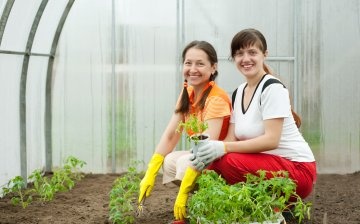


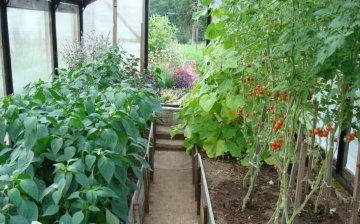
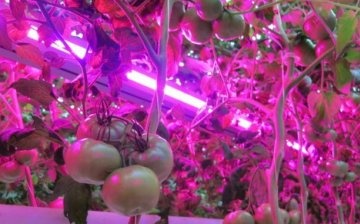
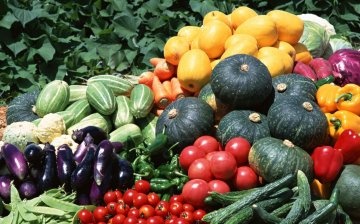






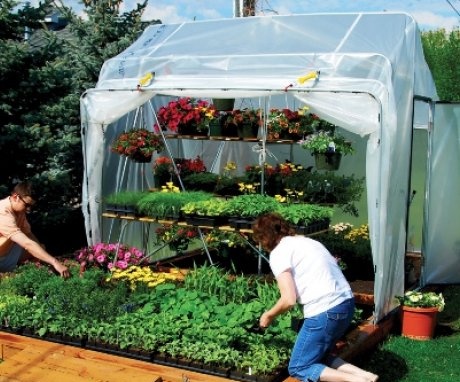
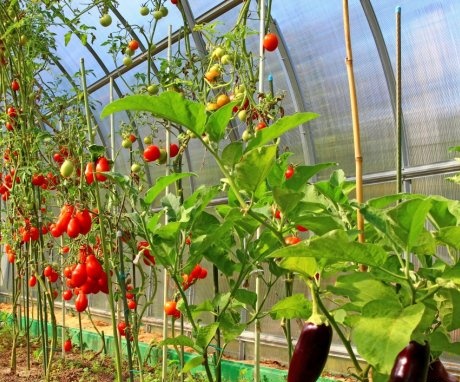


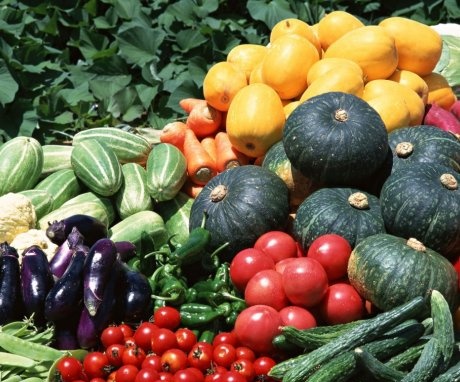
The greenhouse is really a very useful thing. In mine, I grow onions, radishes, tomatoes and cucumbers. I also sow dill so that the young one appears earlier. Unfortunately, there isn't enough room for anything else in my greenhouse. Sometimes I also sow flowers in the markets and take them to the greenhouse.They germinate better in it.
What's the beautiful! I just read the article, looked at the photos - it’s dear to see, everything is green, the eye is pleasing.)) Oh, I want summer with all my heart! And here only the snow has melted. We are northern people, we live in Yakutia, we grow almost everything in greenhouses. It is even more or less warm here in Yakutsk, but in my homeland, I was born on the Kolyma River in the Arctic, so they even grow potatoes in greenhouses there. I am very glad that I came across your site on the Internet. Mommy is an inveterate gardener-gardener. I will definitely tell her about you.))